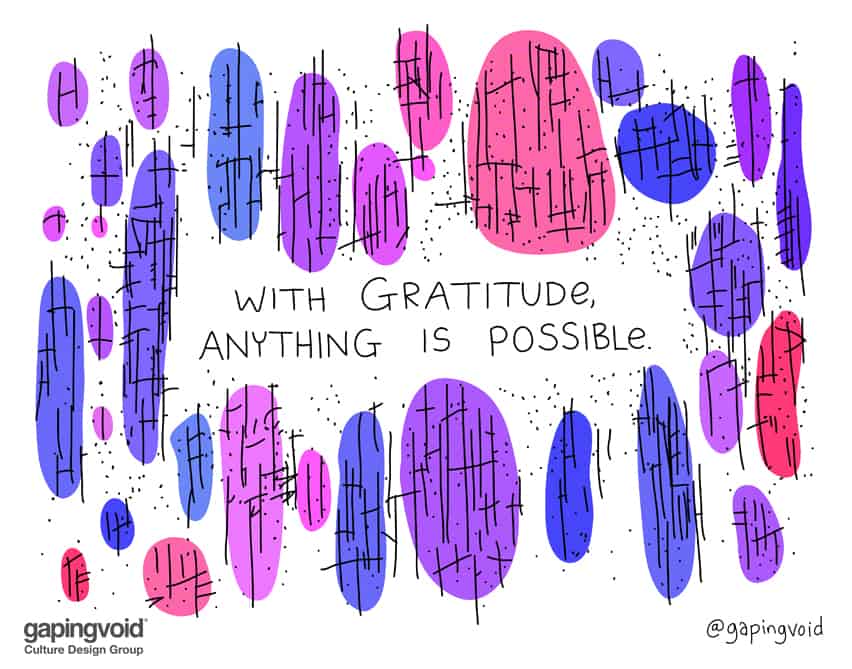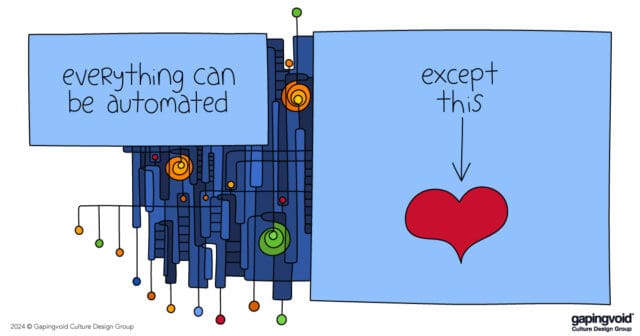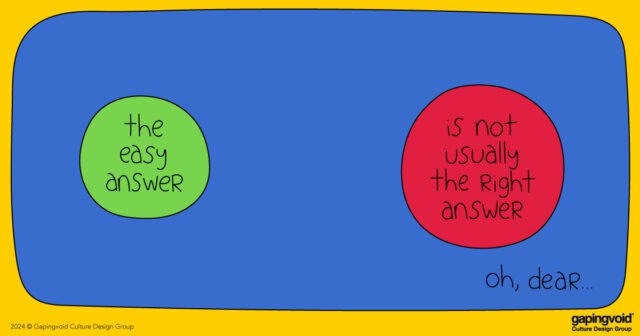
Dr. Benjamin Hardy is an organizational psychologist, bestselling author, and entrepreneur. From 2015-2018, he was the #1 writer in the world on Medium.com. His work is featured on Forbes, Fast Company, Fortuny, Psychology Today, CNBC, Big Think, Cheddar, and many others. He and his wife are the parents of five children. He is currently writing his next book: Personality Isn’t Permanent.
Life is harder now because our world is designed to distract us. Our world is more confusing than ever.
This is no secret.
Depression and anxiety rates are skyrocketing. Addiction is an epidemic. Obesity continues to rise in America. General unhappiness, numbness, and dissatisfaction are basically the expected norm.
If your life isn’t moving in the direction you want it to go, or if you feel overwhelmed by everything on your plate, then this article is for you.
You can apply the methods in this article and see immediate results.
If you begin to develop a practice to apply the methods in this article, then you will learn how to achieve any goal you set.
Gratitude is the mother of virtues.
You’ve heard that a thousand times.
But what does it actually mean to be grateful? Clearly, it isn’t writing down a list of what you’re grateful for once per year on Thanksgiving. And even though that is a helpful exercise, there’s a lot more to it, although it isn’t complicated.
Gratitude Transforms 3 Things
Fundamentally, gratitude is intended to change three things:
- Your past
- Your present
- Your future
If you’re not transforming your past, present, and future, then you aren’t fully experiencing the benefits of gratitude.
Every morning, you have the opportunity to trigger a mental and emotional state that sustains throughout the whole day.
If you start your day right, you’ll be shocked at the momentum you can create.
Even more though, if you give yourself some space — I’m talking 5–30 minutes — of strategic gratitude and visualization, then you literally prime your brain to operate at a higher level throughout the day.
So here’s how to apply the three methods of gratitude:
Transform Your Past
Dan Sullivan, the founder of Strategic Coach, has a very important concept he teaches entrepreneurs: he calls it “The Gap and the Gain.”
Most people are living in “The Gap.” They always see what’s missing. For example, I could get my son a candy bar on my way home from work and when I give it to him, he might say, “You didn’t get the one I like.”
That’s the gap.
My son didn’t notice or appreciate the fact that I went out of my way to get him a gift. He only noticed that the thing wasn’t what it could have been.
He didn’t realize that he just gained something. He only saw the gap.
Most people live their entire lives in the gap. Dan teaches his entrepreneurs instead to live in the gain. This is actually quite simple: rather than measuring yourself against your ideals, you measure yourself against where you were before.
This is very effective for goal setting. Most people don’t like goals because being ambitious is emotionally taxing. It hurts to fail and it’s a let down to succeed.
But these emotional problems come from focusing on the wrong thing.
People get emotionally attached to outcomes when they’re living in the gap. When you live in the gain, all you see is progress. What you focus on expands.
When all you see is progress, your brain comes to expect it more and more. You get progress without being attached to specific outcomes, even though those outcomes come with increased velocity.
Every day, you could measure the gain. You could look back at the end of your day and think to yourself: What were my three greatest wins for the day?
Former Standford business professor and university president, Henry Eyring, had a practice of asking himself every night:
“How did I see God’s hand in my life today?”
Eyring would then spend a few minutes meditating on his day, and he would realize the several instances he experienced miracles or blessings — big or small. He would then record those in his journal.
Now, as much as “measuring” the gain is key, you also want to remember the gain.
Most people, when they look back on their past, often remember the gaps. They remember where things didn’t go as well as they could have. They think about how their parents didn’t show up as much as they could.
It’s very easy in relationships to be in the gap — where all you see is where the other person isn’t up to par. That’s a horrible way to be in a relationship. It’s also not fair to the other person.
Being in the gap forces your brain to think that things cannot change. It’s is how you develop a negatively fixed mindset.
So one of the key strategies of gratitude to apply is reshaping your memory of the past. Yes, you heard that correctly. Your past is not objective. Rather, your past is entirely subjective. It’s a meaning. Good or bad. Happy or sad.
You are the person who ascribes meaning to your experiences. You are the one ascribing meaning and context to your past experiences.
It’s highly likely that a great deal of your “past” is in the gap.
Gratitude allows you to re-remember your past while being entirely focused on the gain. When you re-contextualize your past, you’ll never be the victim to your past again.
Most people, when they describe their current circumstances, point to their past. “I’m the way I am because of [name the experience].”
Your past does not need to be something you are the victim to. Instead, your past can be something continually inspiring you and propelling you forward.
If you truly want to embody and experience the benefits of gratitude, then you must stop trying to be “objective” about this.
You cannot say, “But you don’t understand, my past really is unique and it was horrible.”
I’m not trying to downplay what happened to you. Nor am I trying to ignore the emotional impact of your previous experiences.
What I’m showing you is that, quite literally, you are the designer of your past. You get to decide the narrative and perspective and context.
For example, last year, I launched my first major book, Willpower Doesn’t Work. From outside perspectives, the book was likely a huge success. But for me, it was a huge failure! I had specific goals and expectations that weren’t met. I had invested huge amounts of time and money and didn’t succeed at the level I wanted.
For a long time, my story around that book launch was that it was a failure. Because of that story in my head, my memory of that experience was in the gap. I wasn’t seeing all the brilliant things that came out of that experience.
And the truth is, insane amounts of opportunity, learning, and growth came out of that experience.
So, I’m choosing to remember the gain, not the gap. I’m choosing how I remember that experience. And as a result, I’m choosing my narrative and my past.
Your past is whatever you ascribe meaning to. You can remember the gains, or you can remember the pain.
Post-traumatic growth is the opposite of PTSD. You could have any negative experience imaginable and become better from it. This may take time, but if you are conscious about your emotions and conscious about your future, then you can turn any negative experience into a lot of gain.
Your painful experiences become the doorway to growth and experience, as well as service to others dealing with similar problems.
Your biggest failures and problems can be — if you let them — your greatest drivers of success, learning, and joy.
But you need to choose how you see and how you remember them.
It’s entirely up to you.
You can remember the gain or the gap.
How you choose to remember determines your past.
Transform Your Present Circumstances
“Focus on circumstances and you’ll be a consumer. Focus on capacity and you’ll be a creator.” — Kade Janes
Very rarely are you going to be in ideal circumstances. There will always be friction and challenges to living your dreams. There will always be inconveniences.
The problem isn’t actually your circumstances, but how you’re looking at them.
Perfect circumstances are not actually ideal.
If you look at nature — plants and animals that thrive do so because of difficult circumstances. As the poem by Douglas Mallach states:
“Good timber does not grow with ease:
The stronger wind, the stronger trees;
The further sky, the greater length;
The more the storm, the more the strength.
By sun and cold, by rain and snow,
In trees and men good timbers grow.”
You don’t want perfect circumstances. You want and need a challenge to grow.
But circumstances in general, particularly your current circumstances, need to be reframed. If you’re going to pay any attention to your circumstances, you should consciously focus on the good in them.
Have gratitude for the amazing people in your life, for the opportunities you currently have, and for the chance to live on this beautiful planet.
If you’re reading this article, then you have access to resources that would blow the minds of most of human history.
So, as challenging and limiting as your current circumstances are — you’re probably living in the gap. And when you live in the gap, it really doesn’t matter what you have, you won’t see it that way.
You could be a billionaire, and if you’re in the gap, it will never be enough.
So, part one of transforming the present is appreciating it. It’s not about your resources, but how resourceful you are. There are people with far less doing far more with what they have than you are.
It’s not your circumstances, it’s you.
But there’s actually a problem with focusing on circumstances at all — you’re actually far better off focusing on your capability.
This is a powerful shift.
If you focus on your circumstances, you’ll find plenty to complain about. But if you focus on your capability, then your only option is to get moving.
Your capability is always above your circumstances. There is always something you can do to impact and change your life and move in the direction you want to go.
Having gratitude for the opportunity to grow and move forward is how you change your present. You see all the beauty in what you currently have, and you recognize the amazing power you have to improve upon what you have.
If you’re focused on your capability, then you’re more likely to put your energy into creating and moving forward. If you’re more focused on your circumstances, then you’re more likely to put your energy into consumption and avoidance.
How much time are you spending consuming? How much time are you spending creating?
If you’re consuming, then you’re likely living in the gap. You’re likely focused on your circumstances and what’s wrong or difficult about them.
If you’re creating, then your focus isn’t on your present circumstances, but your future ones. You’re telling a story about your life and you’re the one creating it.
This is a powerful way to live.
Have gratitude for the present and gratitude for what you can do. This allows you to create powerfully.
Transform Your Future, Right Here-And-Now
You are the designer of your past memories, your present experience, and your future as well.
Every morning, during your morning meditation and visualization session, you want to experience and fully embody gratitude for your future.
Visualization is far more powerful when it is mental and emotional. The more emotional and embodied the visualization, the more you will believe and know that it is true.
American novelist, Florence Shinn, has said,
“Faith knows it has already received and acts accordingly.”
Gratitude for your future bolsters your faith.
It allows you to know that you’ll succeed, long before you do.
While most people are defined by experiences from their past, successful people are defined by experiences in their future.
What experiences do you want to have?
What events in your future do you want to see occur?
Are you living your life, right now, as though those experiences were for sure going to happen?
Are you living your life, right now, to consciously create those experiences?
Do you have complete peace that your dreams will come true?
If not, then you likely won’t succeed. Your negative emotional state will stop you from the very things you want.
Your emotional state is fundamental to what you create in your life and future.



